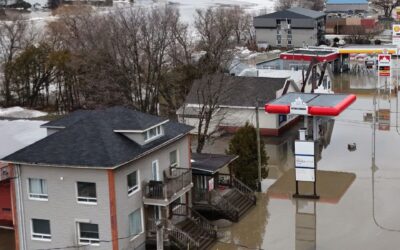COVID-19 Recovery series
As the country moves towards economic recovery from the pandemic, the Institute considers the policy choices ahead for Canada.
The COVID-19 pandemic is a crisis that has reframed our lives and the way public policy aims to improve Canadians’ wellbeing. The long shadow of COVID-19 disruption will affect our policy thinking for the next decade or more. And let’s be clear: in the short-term, getting through this crisis is the only priority that matters. In this context, climate policy takes a back seat. That doesn’t mean climate change is going away as a policy priority, but it does change the landscape and the context for our climate choices.
Prioritizing relief for people and businesses
In this short-term crisis response phase, governments are scrambling to design massive relief packages to bolster safety nets for people and businesses, looking at all policy levers to lessen the crisis. This includes choices about whether to adjust climate policy. Notably the B.C. government, early in the pandemic, announced a delay in the carbon tax increase scheduled for April 1, 2020. The use of the phrase “delay” importantly signals an expectation to households and businesses that carbon pollution will still need to be managed for the long-term. The B.C. government also instituted a one-time carbon tax rebate to individuals and households to help bolster income during the pandemic.
In contrast, the federal government has gone ahead with the scheduled $10 per tonne increase to its price on carbon pollution. Paradoxically, this choice likely makes sense as an income support measure during COVID-19 since, early in the year, the majority of households receive a carbon tax rebate that exceeds carbon tax payments. With the 2020 carbon tax increase comes an increase in the rebate, making the average household in Ontario, for example, 60% better off over the net rebate in 2019. Clearly, halting the carbon tax increase could have left many families worse off.
What about business? The federal approach of using carbon tax proceeds to offer businesses subsidies for energy- and cost-saving technologies will likely not help much with the short-term income hit of the pandemic. While programs that support energy-saving retrofits are ideally suited to help with longer-term recovery by catalyzing spending, they tend to require matching investment and take time to implement.
In the short term, there is a greater need to provide cash payments to business to help bridge to the recovery. As such, there is an opportunity to review the current technology rebating approaches, such as federal government’s climate action incentive fund for small and medium-size enterprises, and assess if rebating the proceeds of the federal carbon price should be reprofiled as a cash lifeline. Deferring carbon tax payments, as governments are doing across various forms of taxation, is another possible approach.
Harnessing economic recovery to reduce future risks
This pandemic has made clear how crucial income support is to help people get through economic shocks (while staying home), but it also won’t be the last shock we face. As the current crisis subsides, policy makers will shift their focus to economic recovery. Short-term emergency support payments will be replaced by spending on longer-term capital projects such as infrastructure renewal.
As this shift to recovery occurs, it makes sense for governments to identify multiple objectives for stimulus spending—including reducing longer-term systemic risks. The impacts of climate change are one of those big risks, with an increasing frequency of storms, heatwaves and fires all disrupting households and businesses. Damages to date include business and personal losses from forest fires in Alberta, health damages from forest fire smoke in Vancouver and other parts of B.C., and flood-induced financial losses for households in most regions of the country. If COVID-19 has taught us anything, it is that proactively reducing future risks can pay big dividends.
To the extent future climate risks can be lessened through recovery spending, there are large benefits from avoiding high-cost outcomes. Imagine a scenario when one of these extreme weather events hits during a pandemic. Unfortunately, it’s not an improbable occurrence: While communities in Ontario, Quebec, Manitoba, and B.C. are still reeling from the last round of devastating spring floods, more potential flooding and forest fires could be around the corner. Where will people go to self-isolate if they have to abandon their homes en masse to the rising waters or encroaching flames? And how could billions of dollars of infrastructure damage affect governments’ capacity to support regional economic recovery? A compounding of multiple risks is a scary proposition that is becoming more tangible and urgent in light of COVID-19.
Shifting global demand for fossil fuels and emission-intensive products is another economic shock on the horizon. As domestic and global demand shifts, governments and industry must think about how workers can be transitioned to new employment opportunities. While we tend to think this transition is a long-term trend, COVID-19 and the corresponding oil price shock have exposed just how fast and hard these shocks can occur. Moving forward, governments can benefit from considering new approaches to help with the transition beyond the employment insurance safety net. Retraining and skill-building investments will climb up government priority lists.
Recovery can also continue current trends that support low-carbon technology and infrastructure deployment. Scaling-up current programs that support businesses and households in choosing low-emitting and energy-saving equipment is a long-term priority. Governments can look to recapitalize current programs, essentially doubling down on current trends to transition to a low-carbon economy while also benefitting from the economic spinoffs of the recovery spending.
From here to there
Minimizing harm as we collectively get through the COVID-19 crisis, and ensuring Canada’s economy is positioned for recovery, is what really matters in the short term. Yet the policy choices governments make in response to this crisis will have repercussions well into the future. As the Institute’s Rachel Samson and economist Richard Lipsey point out, Canada has an opportunity to pursue recovery and growth in a way that is consistent with a broader set of social objectives—just one of which is successfully addressing climate change.
In the weeks and months ahead, we will explore more of the climate-related implications of Canada’s post-pandemic policy choices. Until then, stay home, stay safe, and stay informed.
COVID-19 Recovery – More of this series





